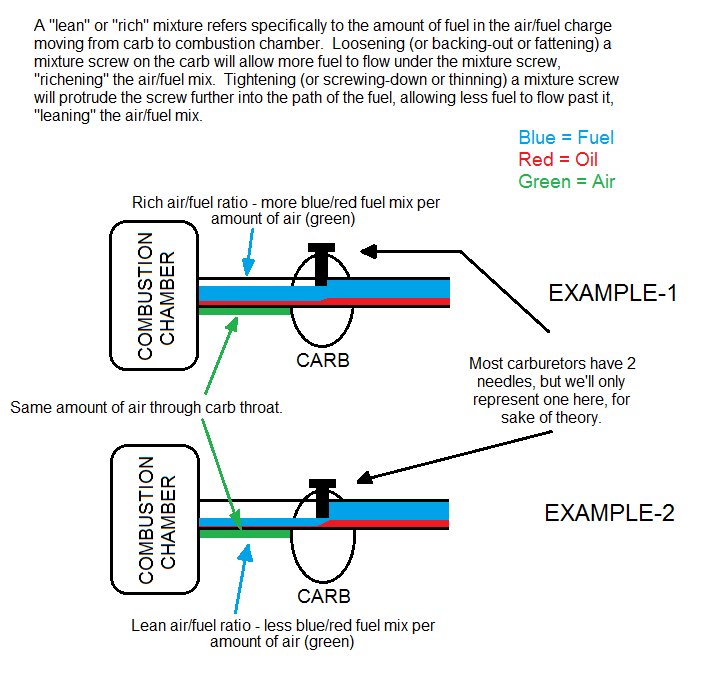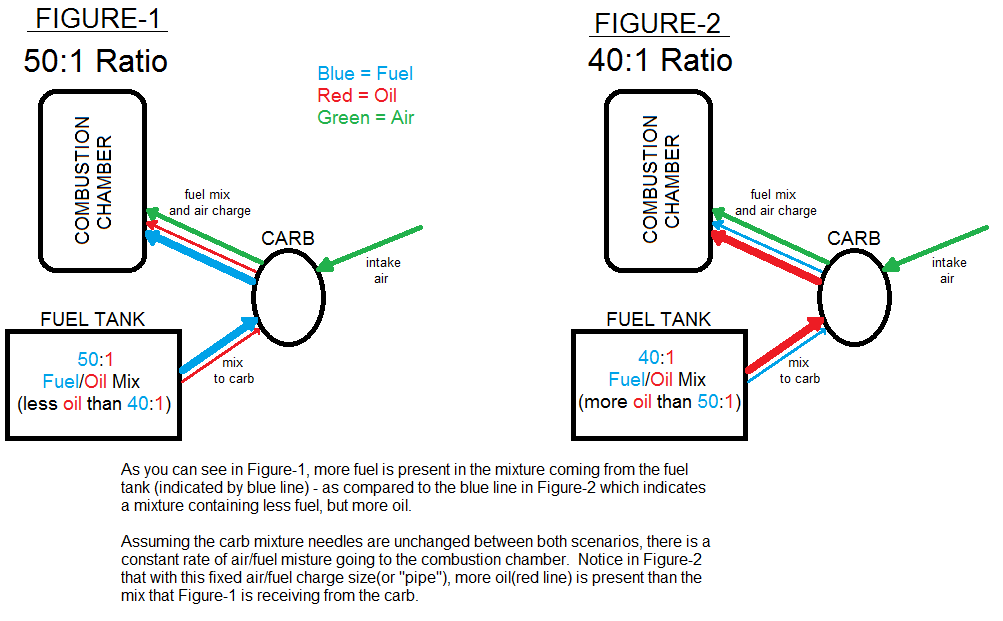I have worked on small engines for over 50 years. I raced motorcycles for a number of years and learned a lot about tuning.
Today's gasoline and oil is quite different then a few years ago, and this has to be considered for optimum tuning.
My gasoline engines are tuned for their use and working conditions.
Correct tuning must be carried out in a "real world" situation----tuned with the engine under load and taking a SPARK PLUG READING.
Any time I get a different chainsaw, I start out by warming the engine to operating temperature, remove spark plug and install a NEW sparkplug, and immediately begin several cuts with the saw under maximum load. Very little idling, just go from one cut to another as quickly as possible.
After several cuts, I remove the sparkplug after shutting off engine during cut.
The spark plug porcelain insulator should have a tan or grey color. A white or slightly colored porcelain, should be corrected by adjusting high speed mixture accordingly. Much better to have a dark colored porcelain if the saw performs as intended.
It will be discovered that different brands of gasoline and oils will give slightly different readings.







